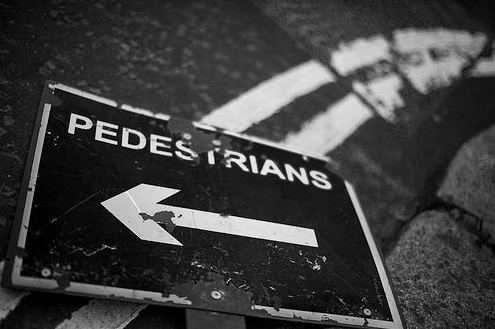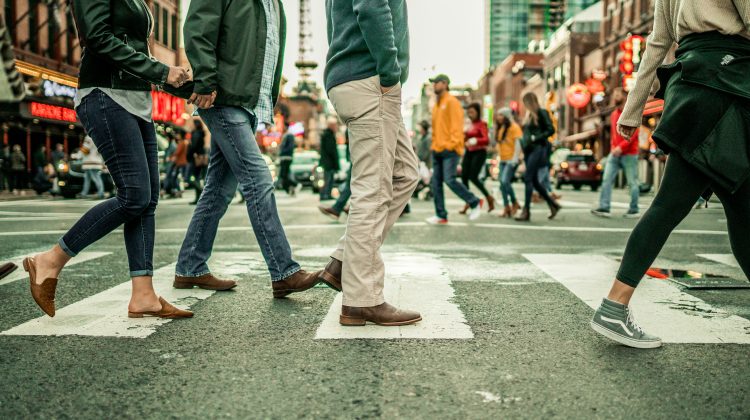What makes a city desirable? For many American’s – convenience is a key element when they are shopping for a new city and neighborhood to call home.
According to WalkScore, a web-based company that rates both convenience and transit friendliness of neighborhoods across the country, there are a number of elements that make a city convenient. Recently updating its algorithm, WalkScore incorporates the following factors when calculating the convenience of cities across the U.S.
-
- Walking Routes – Using a patented system, each city is given a score anywhere from 0-100 based on the walkability from any address. Scores in the high 90s are a walker’s paradise – making it easy to run errands by foot. Amenities that are only a five minute walk away such as grocery stores, schools, and offices are awarded the maximum number of points. The further away these amenities are from a given address, the lower the score. Neighborhoods that score anything lower than 30, mean the majority of a person’s daily errands or activities require a car.
- Transit Score – A city’s transit score is measured based on how well a location is served by public transportation – such as city buses, a light rail system, a tram, etc. To calculate a transit score, WalkScore assigns a “usefulness” number to public transit routes according to the type of route (bus or train), their frequency as well as the distance between stops along the route. Similar to the walking score, any number above a 90 is defined as world class public transportation. A city that scores a transit score below a value of 30 has minimal public transportation options.
- Bike Score – A bike score is measured based on how well the area is built for cyclists. A biker’s paradise will have plenty of bike lanes, off road trails, road connectivity, etc. Using the same scale of 1-100, cities that score in the 90’s have the infrastructure that make it easy to run errands on bike. A score below 50 means there is minimal bike infrastructure.
- Crime Grade – Your neighborhood might average a score of 80 in the areas listed above – but if the streets aren’t safe to be walking alone or taking the bus, the concept of convenience is out the window. WalkScore measures a city’s crime grade based on recorded violent crime and property crime data and weighs it by severity and distance from a given address. Instead of assigning a value, the city receives a grade on a scale of A-D.
Most Walkable U.S. Cities
By comparing data such as biking routes, walking times and crime statistics, WalkScore is helping people find the right home in the right location.
“More and more people want the ability to take the Metro to their job or walk to work from their apartment or house”, says real estate agent Ed Schmidt.
According to a 2016 RPA report, about 56 percent of millennials and 46 percent of baby boomers prefer to live in a more walkable city. In order to help homebuyers through the process of finding the perfect fit, WalkScore annually updates its list of cities that rank “most walkable” – with the following 10 cities making this year’s list:
- New York City; 89.2
- San Francisco; 86
- Boston; 80.9
- Miami; 79.2
- Philadelphia; 79
- Chicago; 77.8
- Washington, D.C.; 77.3
- Seattle; 73.1
- Oakland; 72
- Long Beach; 69.9
Most Walkable Cities are Also the Most Dangerous
The cities above are deemed walkable because of the convenience to “live, work and play” in the same community. However if you intertwine pedestrian safety, some cities might have to dock a few points from their score. As more and more people roam the streets, the chances of an accident occurring are getting higher. There are more distracted pedestrians, more distracted drivers, more cars speeding through crowded roadways and not enough developmental changes to withhold all of the chaos.
With transit scores and crime grade set aside, there’s an element of safety that WalkScore might be missing from its algorithm. How “walkable” is your city? The crime grade might say it’s safe to run to the grocery store late at night and the transit score might say you’re only a few metro stops away from work – but where is the score for pedestrian safety?
Pedestrian deaths in the U.S. are at a five-year high and data shows that if you’re commuting by foot or bike in the cities above labeled as “most walkable” – you’re actually at a higher risk for injury. Jeff Rosenbaum, a Pennsylvania injury attorney, reports that pedestrians accounted for 15% of fatalities in Philadelphia during 2014 alone. Within the same year, pedestrians accounted for 27% of fatalities in Miami and 53% of fatalities New York City.
“Urban areas are now faced with the growing threat of pedestrians glued to smartphones, putting themselves, as well as motorists, in greater danger.”
Everyone is trying to multi-task – drivers are navigating through crowded cities while pedestrians are looking down at their smartphones instead of checking for a clear intersection. Studies also show that pedestrians on their smartphones will take longer to cross the street than someone who might be paying attention to traffic.
Safety Tips
As more and more Americans are demanding convenience, it’s likely that WalkScore ratings will only continue to grow across all U.S. cities. As of now – state and federal policymakers are weighing solutions for preventing fatalities linked to driver and pedestrian distractions – but it’s best to take your own measures for immediate safety. Pedestrian safety relies heavily on distraction. Put down the phone! Whether you’re behind the wheel or among the crowd on the sidewalk, it’s important to be aware of your surroundings. Just because there is a stop sign, doesn’t mean the driver will always be paying attention to road signs – and just because pedestrians have the right of way doesn’t mean it’s always safe to be in the crosswalk. Allowing extra time to get from point A to point B will lower the chance of getting into an accident – whether you’re traveling by foot, by bike or in a car – be patient on the roadways.




No Comment